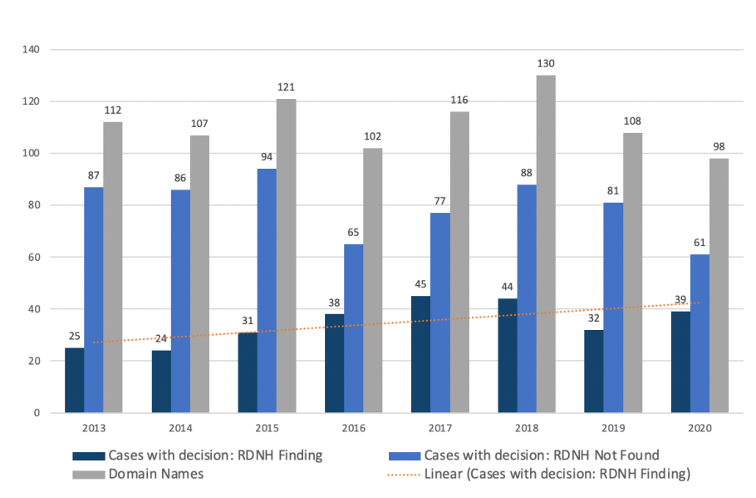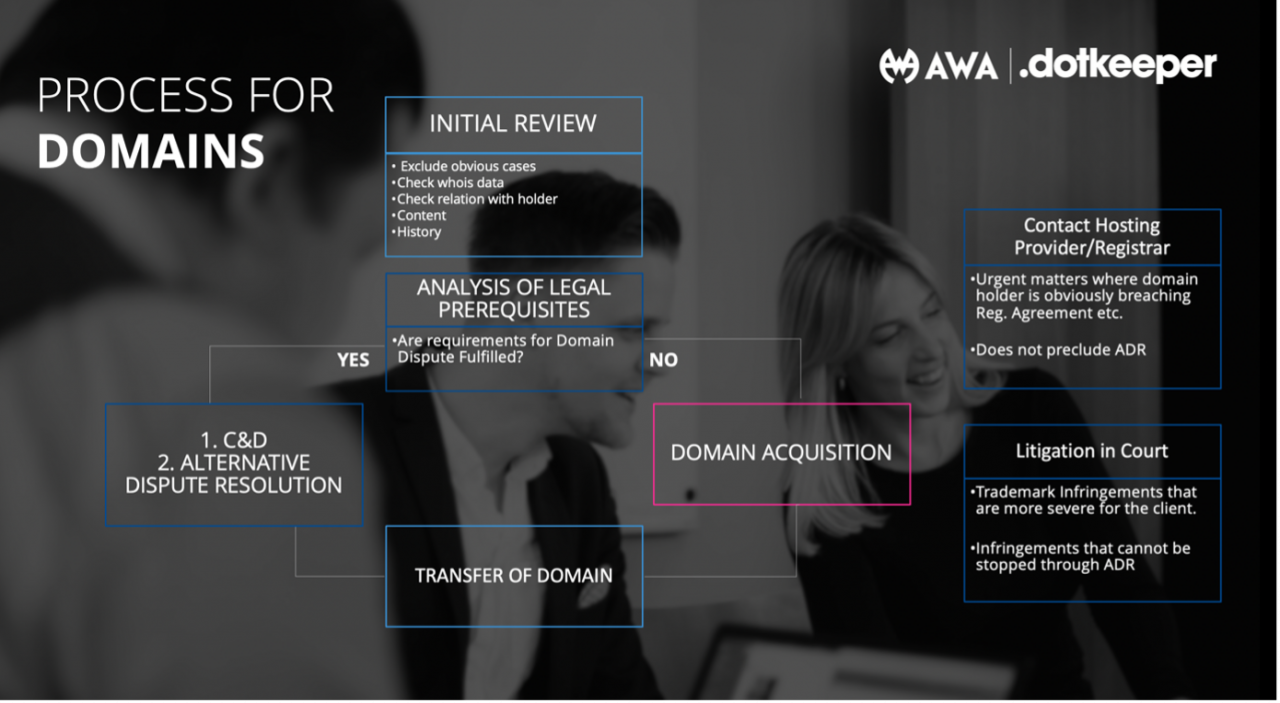
When legal action is not sufficient or applicable, a route to securing the desired domain name is to purchase it from the current holder. Hiring a domain name acquisition expert might be the best option in this situation.
In this part of the blog series, we will look further into The Acquisition Route and learn more about the domain name aftermarket. Some things create better chances of success for domain acquisition brokers, and at the end of this post our aftermarket experts will provide you with some advice on success factors that will help you strike a better deal.
One domain – many claims
The important thing to understand about the domain name aftermarket is that one domain often has several possible use cases. On a global scale, there can be a lot of potential buyers for a certain name. And, even if that is not the case, some names can potentially have great future value.
So, the fact that ”your” domain is registered and possibly for sale does not by definition mean that you are being targeted by a cybersquatter. You could also put it this way: Trademark targeting is actually the exception.
Investors and squatters
As stated, targeting is the exception. When there is no targeting, all we have is a domain that is owned by someone else. It was acquired by someone else first on a free-for-all open market, possibly by an investor who figured that this particular domain was likely to sell for a good price. Squatters, on the other hand, start at the other end. They monitor trademark applications and business registrations, and they acquire domains because of your specific rights to a name. Many squatters end up shooting themselves in the foot by marketing the domain to the trademark owner.
Reverse Domain Name Hijackers
The diagram below is from a report released by ICANN in the beginning of 2022 (ICANN is practically the custodian of the domain name system). It shows cases in which the question has been whether a UDRP-applicant has brought a frivolous claim, and if they should be labeled a ”Reverse Domain Name Hijacker”: RDNH. The red dotted line shows the trend.

In these cases, the percentage of RDNHs is steadily rising. Our interpretation is that the ever-growing domain name aftermarket and the growing number of UDRP applications inherently lead to UDRP panels seeing the importance of putting the foot down on borderline cases. Because, if the UDRP becomes an alternative route to acquiring domains that the interested party has a questionable claim to, the system would be overloaded and possibly lose track of the scope and balance intended when it was created.
For clients, a very tangible result of losing a UDRP case can very well be a new, much higher price for the domain. The opportunity could also be lost altogether due to hard feelings and disagreement.
Taken?
The number of domains actively listed for sale on marketplaces are growing by the second. To the public eye, domain name investment is still something questionable, but that is a shifting notion. Today, the largest marketplace has over 21 million domain names listed. The purchase process is getting simplified, more aftermarket domains are getting a set price, installment payment options are being implemented, and more investors are getting involved. The highest valued domains, one-word English language dotcom domains, regularly sell for millions of dollars.
Of course, the majority of the domains are not listed on any marketplace. They might still be possible to acquire. This is the major benefit of aftermarket expertise that can track down an owner and strike a deal. It is, of course, also possible that the domain you need is in use by someone else. That is a difficult situation and because the domain is the key to their customers the price is likely going to be a very high one. But, without asking or trying, you will not know for sure. Domains in active use can be transferred for massive sums, and at Dotkeeper we have brokered several. The domain does not need to have great general value, but often does.
Success factors when buying an already taken domain name
Some things create better chances for a successful deal when you are acquiring an already taken domain name. Below we have listed two important factors to take into consideration.
Value?
One thing to consider, before contacting a broker, is what the domain acquisition is worth to you. Is it even worth a try? The reasons to do this are many. If the price you are willing to pay is a couple of zeros short of the market value, maybe you need a new plan? If you are not able to name a price, you are also holding back the main tool in the brokers toolbox as the response rate to open inquiries that do not even mention a number is very low. Would you think that an inquiry is serious if it does not mention an offer?
Thus, a budget is a necessity. Dotkeeper can often help gauge a viable market value, but when it comes to domain names, each one is unique, and each registrant is unique. There are no guarantees. In the end, the client must assess the value. Some clients see that the best domain is a solid investment that will pay for itself over time, and that the cost can be deducted as a business expense. They are not held back by the notion that domain names should be available and free, because they are generally not anymore.
A budget is also a requirement for a well-planned negotiation. Negotiations can take time and patience, and if the broker knows beforehand what the preconditions are, it is much easier to plan when to hold, when to bluff, and when to fold.
First contact
Another important factor is the position of the broker. Sometimes a client has tried themselves and failed. Other times there might be legal claims made without great merit. All of this means that the position of the broker is worse off should they get the assignment at that point. The client might have revealed their identity, they might have aggravated the seller, or they might have made them uneasy or angry – possibly by becoming angry themselves. That is hard to undo, so our advice is that if the domain is important, let a broker handle it from day one. Another important reason is that a seller has no reason to interact or reply to the broker when they already have a direct line of communication with the buyer.
Dispute or not?
We are going to circle back to our process and the flowchart from the first part of this series, because the question of to dispute or not to dispute is an important one. How to answer that question, and when to answer it, can make all the difference, because, as we noted, there are consequences to losing a UDRP case. It can be costly, especially if the domain is important. Taking chances is rarely a good idea, and it is not in this case either. If a dispute misfires, the chances of getting a good price and a good-spirited negotiation fly out the window.
So, an assessment of the legal claims is always going to have to be the very first thing to investigate. In short, our opinion is that there either is a clear-cut case, and that the client should go ahead with a dispute, or the case is unclear, and then acquisition brokerage is the best option.

In addition, an unsuccessful case turned into a brokerage assignment is likely to fail or become expensive. And a weak case that goes from brokerage to UDRP is also a bad choice, as that will likely feed complainant-side arguments about the use of the UDRP process when an agreement cannot be reached, rather than using it for valid legal claims.
What is next?
Do you have a specific domain name in mind? We are here to help guide you on how you can and should act if someone else owns the domain name you want. Get in touch with us here!


